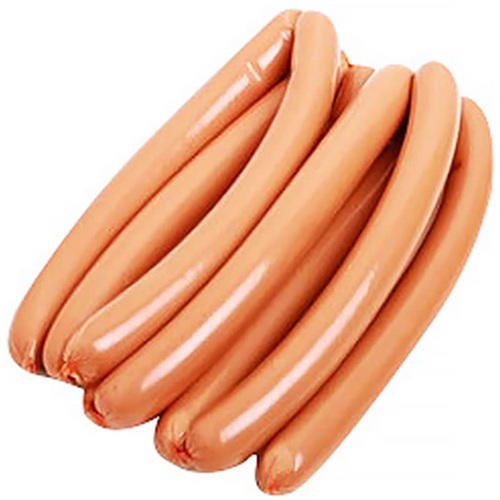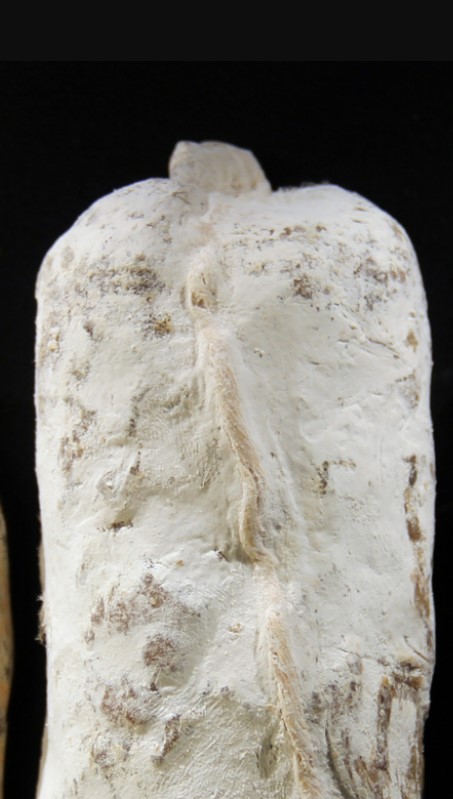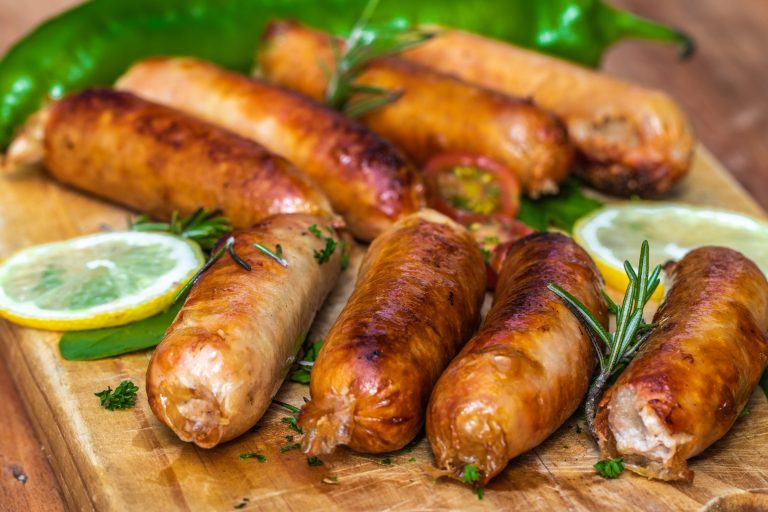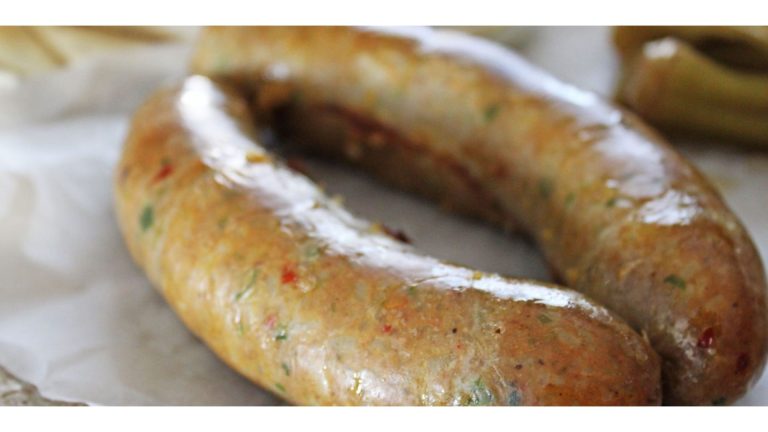What Are Sausage Casings Made From?
Sausages help the ground meat from a particular shape, protect it, and often contribute to its flavor.
But, with so many different sausage types and shapes, it is not uncommon to ask, what are sausage casings made from?
Whether you plan on making your sausages or buying them from a store, learning about the different types of sausages allows you to better understand their purpose and help you avoid some you don’t like.
A sausage casing is made from a pig intestine. It is a thin skin made from the intestinal tissue of a pig and it is used to stuff sausages and similar products.
This casing is usually rolled over a filling tube, which is then twisted around the sausage to form a cylindrical shape.
Sausages are classified into two categories: natural and artificial.
Artificial ones are made from plastic, while natural ones are made from animal intestines.
This article is going to teach you everything you need to know about sausage casing.
Table of Contents
How Are Sausage Casings Made?
Depending on the material, the production process of sausages can be different. Sausages are made from the submucosa, a layer of the gut of the animal. Sausages are typically made from pigs but can also be made from goats, cattle, sheep, and even horses.
Now the intestines are cleaned, rinsed, and salted to prevent additional bacterial growth. This job is done by machines and the intestines are cleaned before use.
Every type of artificial sausage is different in the way it is made. Animals’ hides, tendons, and bones can be used to make the Collagen casings.
They are usually made from pork and beef, but fish and poultry can also be used to make them.
The collagen is dried after being pushed into an extruder to make different shapes.
They are cheaper than natural ones, and it is much easier to control their size, which is why they are widely spread.
Plastic is usually made from polypropylene, polyethylene, or polyamide.
Because smoke and water can’t penetrate the plastic, they are used for cooked meat and non-smoked products.
Don’t worry if you consume them accidentally; they are not dangerous. Plants provide the basis for cellulose casings.
Cotton linters and wood pulp are usually processed to get viscose, which is then extruded to obtain transparent, strong casings In some cases, it is possible to get treated with a dye.
These are more porous to water and smoke than plastic. After cooking, it is a good idea to peel off the cellulose casings.
If you don’t eat meat and want to make vegan sausages, this is an excellent option.

Are Sausage Casings Made From Intestines?
Natural casings are made from the body of animals. Sausage casings are made from a layer of intestines called the submucosa.
It is thoroughly washed and rinsed to remove the blood and mucosa. Now they are preserved in salt to prevent additional bacterial growth.
Their size is determined by what animal they are made from, with lamb being the narrowest and beef the widest.
There are several benefits to natural casings. They don’t usually get treated with potentially harmful chemicals.
They are the only ones allowed for organic meat production in the EU and the US. There are rules about the regulations.
Enhancing the meat’s flavor and maintaining its texture are two things they do. Natural casings have an irregular shape and size, which makes them distinguishable.
How is Chicken Sausage Casing Made?
Chicken sausage is usually made from the animal’s stomach.
Natural casings add to the flavor and appearance of the meat, are good for eating, and can survive high temperatures, which is important if you are cooking the sausage.
The choice is up to you if you are making chicken sausages.
It depends on how big of a diameter you want your sausages to be, but natural casings are typically the most frequent choice.
Natural casings can be irregular in size and shape, which is one of the drawbacks.
If you want your sausages to be of the same diameter, you might want to use the collagen casings.
It’s not only synthetic, but also derived from animals, and they’re usually eaten.
Chicken sausages are usually not smoked, so plastic casings are used for them.

How is Summer Sausage Casing Made?
Summer sausages can be different depending on the manufacturer. Most of the time, the casings are made of an animal’s body part.
The meat’s flavor can be enriched by the natural origin of the animal intestines’ casings. They are different in size and shape, so you can recognize them.
It is important to know if you have allergies or are trying to stay away from them because they are usually not treated with chemicals.
Summer sausages are often made with genetic casings. Pork or beef are the most common sources of collagen that is synthetic.
They are an excellent alternative to natural ones because they are less expensive and are more delicious.
Sausages derived from plants can be found during the summer. If you are using them, make sure you peel them off after cooking.
Sausages are usually smoked during the summer season. Plastic can’t be used in that situation because smoke can’t penetrate it.
You don’t have to worry if you don’t know what your summer sausage is because all of it is safe for consumption.
If you can chew it, it’s most likely plastic, but if you can’t, it’s most likely cellulose.
How is Vegan Sausage Casing Made?
Vegan sausages are becoming more and more popular among people that eat meat.
These are usually cruelty-free and don’t contain any potentially harmful ingredients. They are used for organic, kosher, and halal production as well as being completely edible.
The seaweed extract called carrageen is combined with water, water, and some other ingredients.
It is important to note that they are dissolved in water, so if you are making sausages, don’t rinse them out in the water before cooking.
Sausages made from synthetic materials are also vegan. The cotton linters used to make the cellulose casings aren’t usable.
If you are making smoked or grilled vegan sausages, the cellulose casings are an excellent option because of their smoke-permeable nature.
The reason they are only used for cooked sausages is that they don’t allow smoke penetration, which is why they are made of different polymers.
They are vegan, but some people don’t use them because of the potentially harmful ingredients. Plastic is also inedible with cellulose.
Conclusion
Sausage is available in many forms and can be either natural or artificial.
For hundreds of years, the meat’s flavor has been contributed to by the natural casings made of animal intestines.
You can choose from a variety of artificial casings made of different materials.
If you don’t want to eat meat or if you want to avoid potentially harmful ingredients, you can choose vegan sausages that contain carrageenan.
Hopefully, this article will give you a better idea of what sausage is made from and which option is the best for you.

Foodie and a passionate cook, I am here to share all of what I know about cooking, kitchen, and food prepping.
Follow me for delicious and healthy recipes.







